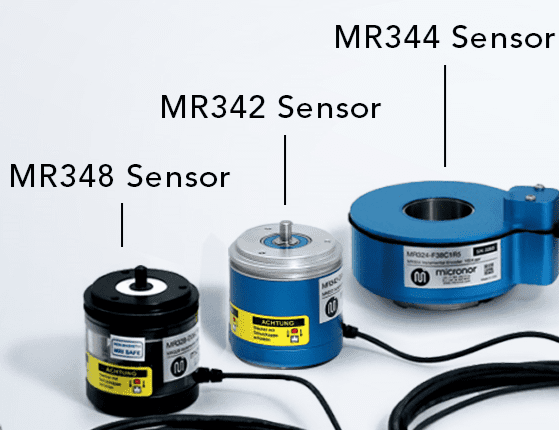Fiber Optic Incremental Encoders are typically used to sense the motion and speed where conventional electronic-based encoders and resolvers are inadequate.

Fiber Optic Incremental Encoders are typically used to sense the motion and speed where conventional electronic-based encoders and resolvers are inadequate.
The MR340-1 DIN Rail Mount Controller is the active optical and electrical interface for the MR340 Series ZapFREE Fiber Optic Incremental Encoder System. The system is an innovative all-optical design immune to any electromagnetic interferences such as magnetic fields, lightning, voltage, and other harsh environment conditions.
As the incremental code passes through an MR34X Sensors internal optical pick-up, the phase output of two
light beams creates the classical A/B quadrature signals accessible via the controllers electrical interface.
The controller keeps track of position and also calculates the RPM and speed of the connected encoder Both position and speed can be read via RS485 Modbus RTU serial interface, USB, SSI or analog output. The analog output can be configured for either ±10V or 4-20mA output.
Get a detailed view of our products, including their features, specifications, and available models. Find the perfect solution for your needs.

Our product offers a range of advanced features and benefits that set it apart from the competition. With cutting-edge technology and exceptional performance, it delivers unparalleled value to our customers.

Experience improved productivity and precision with our product’s state-of-the-art capabilities.

Simplify complex tasks and optimize workflow with our product’s intuitive design.

Count on our product for long-lasting reliability and consistent performance in any environment.
Find answers to common questions about our products and services.

The service provided by Everight was exceptional. They helped us find the perfect sensor for our application and their expertise was invaluable.


The service provided by Everight was exceptional. They helped us find the perfect sensor for our application and their expertise was invaluable.


The service provided by Everight was exceptional. They helped us find the perfect sensor for our application and their expertise was invaluable.

Fill out the form below to request more information
"*" indicates required fields
"*" indicates required fields